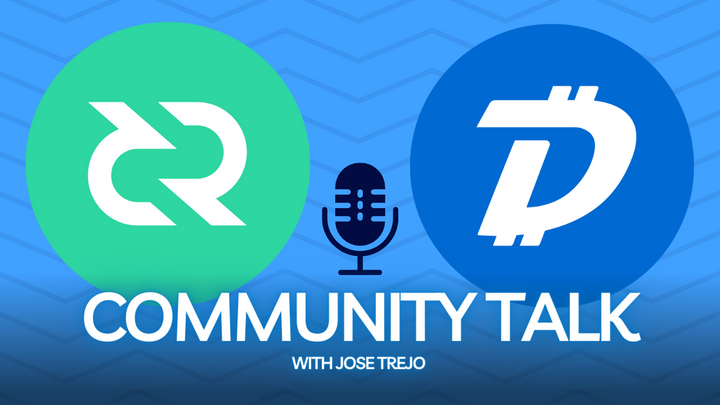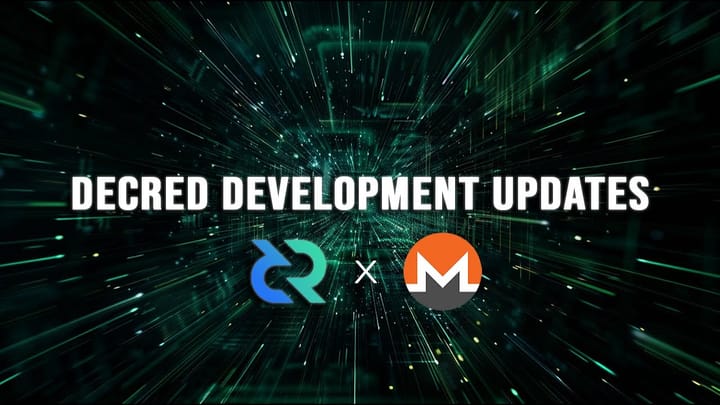The world of cryptocurrency is dynamic and ever-evolving. While Bitcoin and Ethereum remain cornerstones of the crypto ecosystem, altcoins introduce exciting possibilities and opportunities
Cryptocurrency, once a niche fascination, has now become a mainstream phenomenon. Bitcoin, the pioneer of digital currencies, grabbed headlines with its meteoric rise in value. Ethereum, with its smart contract capabilities, brought a new dimension to blockchain technology. However, there's a vibrant world of alternative cryptocurrencies, or "altcoins," that offer unique features and investment opportunities beyond the big names. In this article, we'll embark on a journey to explore some of the promising altcoins that have gained traction in the crypto space.
Altcoins: What are they?
Altcoins, short for alternative coins, represent a diverse and dynamic segment of the cryptocurrency market that has gained significant prominence in recent years. While Bitcoin, the pioneering cryptocurrency, continues to dominate in terms of market capitalization and recognition, altcoins have proliferated, offering a range of innovative features, use cases, and investment opportunities. These digital currencies are built on blockchain technology, like Bitcoin, but often bring unique features and functionalities to the table, creating a vibrant ecosystem of digital assets.
One of the defining characteristics of altcoins is their potential for innovation. Unlike Bitcoin, which primarily serves as a digital store of value and medium of exchange, altcoins often explore different niches and applications within the broader blockchain space. For example, Ethereum, one of the most prominent altcoins, introduced the concept of smart contracts, enabling developers to create decentralized applications (DApps) on its platform. This innovation has paved the way for a wide array of use cases, from decentralized finance (DeFi) to non-fungible tokens (NFTs), revolutionizing how we interact with digital assets and contracts.
The sheer variety of altcoins is staggering. Some aim to address scalability issues that have plagued Bitcoin, while others focus on enhancing privacy and security features. Monero, for instance, is renowned for its privacy-centric approach, offering users truly anonymous transactions. Meanwhile, cryptocurrencies like Litecoin prioritize faster transaction confirmation times, making them suitable for everyday transactions. Ripple, now known as XRP, has carved its niche in the remittance industry by facilitating cross-border payments with incredible speed and low fees.
Investors have taken notice of altcoins as well, recognizing the potential for substantial returns on investment. The altcoin market is known for its volatility, with prices that can fluctuate wildly over short periods. This volatility can present opportunities for traders and investors looking to capitalize on price movements. However, it also carries inherent risks, as prices can plummet just as rapidly as they rise. Consequently, it's crucial for individuals interested in altcoin investments to conduct thorough research, understand the technology behind the coins they're considering, and assess their long-term viability.
In summary, altcoins represent an exciting and dynamic facet of the cryptocurrency world. They offer a playground for innovation, with each coin attempting to address specific challenges or introduce novel functionalities. Whether you're a developer, investor, or simply curious about the future of finance, altcoins have a role to play in shaping the digital landscape. As the crypto space continues to evolve, altcoins are likely to remain at the forefront, pushing the boundaries of what blockchain technology can achieve and providing alternative options for users and investors alike.
The Rise of Altcoins
Bitcoin's dominance in the crypto market has historically been overwhelming. However, the crypto landscape has evolved dramatically over the years, giving birth to thousands of alternative cryptocurrencies. These altcoins are often built on different blockchain networks and aim to solve specific problems or offer innovative features. While Bitcoin and Ethereum remain solid investments, altcoins have their own merits and can diversify a crypto portfolio.
Ethereum: Beyond the Second Place
Before diving into lesser-known altcoins, let's touch on Ethereum's significance. Ethereum isn't just an "altcoin" anymore; it's a blockchain platform that has revolutionized the crypto world. Its smart contract functionality enables decentralized applications (DApps) to be built on its network. With projects like DeFi (Decentralized Finance) and NFTs (Non-Fungible Tokens) thriving on Ethereum, it's positioned itself as a vital player in the crypto ecosystem.
Altcoins to Watch
1. Cardano (ADA)
Cardano is often hailed as a potential Ethereum competitor. It focuses on scalability, sustainability, and interoperability. Its unique consensus mechanism, called Ouroboros, aims to achieve secure and energy-efficient blockchain operations. Cardano's smart contract platform, named Plutus, opens the door to DApps and DeFi projects. Many crypto enthusiasts are keeping a close eye on ADA for its long-term potential.
2. Polkadot (DOT)
Polkadot is designed to be a multi-chain network, allowing different blockchains to interoperate seamlessly. It's often referred to as the "blockchain of blockchains." Its goal is to create a decentralized and interoperable internet, fostering innovation and collaboration across the crypto space. DOT has gained attention for its ability to connect various blockchains and enable the transfer of data and assets between them.
3. Chainlink (LINK)
Chainlink is a decentralized oracle network, bridging the gap between smart contracts and real-world data. Its technology allows smart contracts to access data sources, APIs, and payment systems in a secure and reliable manner. This is crucial for the success of DeFi projects, as they rely on accurate and timely information. Chainlink's LINK token powers its network and plays a vital role in its ecosystem.
4. Solana (SOL)
Solana is known for its blazing-fast transaction speeds and low fees. Its high-performance blockchain is built to support decentralized applications and crypto projects of all kinds. Solana's unique consensus mechanism, Proof of History (PoH), contributes to its speed and scalability. The network has gained attention for hosting a variety of projects, including DeFi platforms and NFT marketplaces.
5. Avalanche (AVAX)
Avalanche is a blockchain platform that focuses on customizability and flexibility. It allows developers to create their own blockchain networks and assets with ease. Avalanche's consensus mechanism, Avalanche consensus, is designed for speed and security. It has gained recognition for its potential in powering decentralized finance applications, as well as its interoperability features.
6. Decred (DCR)
Decred is a unique cryptocurrency that combines Proof of Work (PoW) and Proof of Stake (PoS) consensus mechanisms. It emphasizes community governance and aims to provide a decentralized and self-sustaining ecosystem. Decred holders can participate in the decision-making processes, making it a truly community-driven project. Its hybrid consensus model and focus on decentralization make it an intriguing altcoin to watch.
7. Digibyte (DGB)
Digibyte is known for its commitment to security and decentralization. It boasts fast transaction speeds and a robust, well-established blockchain. Digibyte is often praised for its forward-thinking technology and focus on cybersecurity. It has multiple mining algorithms, enhancing security and decentralization. As a result, DGB has garnered a loyal following within the crypto community.
The Importance of Research
While these altcoins hold promise, it's crucial to remember that the crypto market is highly volatile and speculative. Before investing in any cryptocurrency, conducting thorough research is essential. Here are some key factors to consider:
1. Team and Development: Examine the team behind the project. Do they have experience and expertise in blockchain technology? Is the project actively developed and well-maintained?
2. Use Case: Understand the problem the cryptocurrency aims to solve. Does it have a clear use case, or is it a solution in search of a problem?
3. Adoption and Partnerships: Look for evidence of adoption and partnerships with other crypto projects or mainstream businesses. Adoption can drive long-term value.
4. Technology and Security: Assess the technology behind the cryptocurrency. Is it secure, scalable, and innovative? Security is paramount in the crypto space.
5. Market Trends: Stay informed about market trends and sentiment. Cryptocurrency prices can be influenced by news and social media.
Diversifying Your Portfolio
Cryptocurrency investment is inherently risky, and it's advisable never to put all your funds into a single asset. Diversification helps spread risk. Consider allocating a portion of your crypto portfolio to promising altcoins while keeping a significant portion in established cryptocurrencies like Bitcoin and Ethereum.
Conclusion
The world of cryptocurrency is dynamic and ever-evolving. While Bitcoin and Ethereum remain cornerstones of the crypto ecosystem, altcoins introduce exciting possibilities and opportunities for investors and developers alike. Cardano, Polkadot, Chainlink, Solana, Avalanche, Decred, and Digibyte are just a few examples of altcoins with promising futures. However, remember that investing in cryptocurrencies carries risks, so always approach it with caution and conduct thorough research before making any decisions. As the crypto space continues to innovate, there's no doubt that more altcoins will emerge, further enriching this fascinating financial landscape.






Comments ()